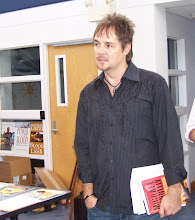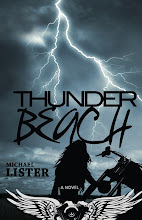
Christmas movies are as much a part of my holiday traditions as parties and presents, candy and carols. I love films in every genre, but certain Christmas movies are among my favorite films of all time—I’m talking stranded-on-a-deserted-island favorite.
If I did find myself on an island this yuletide season, these are the movies I’d want with me.
“It’s A Wonderful Life” ranks among my favorite movies of all-time, perhaps even tied for first place with “Casablanca”, and the only film that comes anywhere close to moving me as much as it does is “Keys of the Kingdom.”
George Bailey has so many problems he’s thinking about ending it all on Christmas. A film so dark it’d be noir if not for the happy ending, there’s far more to “It’s A Wonderful Life” than most viewers imagine.
George Bailey is me, he is you, and he reminds us all that our little lives can make a big difference in the lives of others. George Bailey teaches us what the wonderful writer Frederick Buechner says so eloquently: “Listen to your life. See it for the fathomless mystery that it is. In the boredom and pain of it, no less than in the excitement and gladness: touch, taste, feel your way to the holy and hidden heart of it because in the last analysis, all moments are key moments, and life itself is grace.”
Richard Curtis is a revelation. I’ve loved his work since I first saw “Four Weddings and a Funeral” by myself in a small theater in Tulsa, Oklahoma, when it first came out. A few years later, when I saw “Notting Hill,” I knew I would be a fan of everything he wrote, and as powerful as “The Girl in the Café” is, I believe “Love Actually” to be his best film so far.
“Love Actually,” an extremely entertaining film, is also, by turns, poignant and heartbreaking. It, better than any other modern movie, and perhaps any movie in history, captures the magic of Christmas, using the dizzying effects of romantic love as a metaphor for its gentle madness.
Crime movies don’t get much darker or more comedic than the neo noel noir, “The Ice Harvest.”
In icebound Wichita Falls, Kansas, Christmas Eve is as dark, depressing, and desperate a night as any of the year, and Charlie Arglist (John Cusack) is trying to escape it, leave town with two million dollars of mob boss Bill Guerrard’s money. Can he escape Wichita Falls? Can any of us?
Though all performances are strong, it’s Cusack’s embodiment of Arglist that sets the film apart. His ability to make the small-time, small-town, lawyer a likable everyman trying to break out of his quiet life of desperation gives the film its charming and redeeming qualities.
“The Ice Harvest” is dark, quirky, and blackly comedic, but it also has some poignant moments of existential meditation, erudite contemplations of the elusiveness of the spirit of the season, and stinging satire on the hypocrisy of Christmas.
“As Wichita Falls, so falls Wichita Falls” is written and spoken repeatedly throughout the film like a lost line of poetry or a riff of jazz, and it says it all. It’s about existentialism, karma—something made far more obvious in the alternate ending included on the DVD.
Two of the things most associated with Christmas—family and home—are brilliantly captured in “The Family Stone.” A dramaedy about the only thing crazier than Christmas—family, the perfectly cast film makes me wish I were a member of the Stone family. As much about life and death, loss and love, as anything else, Christmas provides a prison-like cauldron to heat up the explosive elements and dynamics of all families, but none more than those of the Stone family.
“The Holiday” starring Cameron Diaz and Kate Winslet is a well written and wildly romantic holiday movie, sentimental without being overly sappy. The story revolves around two disillusioned women, one from England, the other from the US, who switch lives and find what they’ve been missing. Like the season in which it’s set, the movie is magic.
This holiday season, give yourself the gift of great movies. Travel with George Bailey on his dark journey, Charlie Arglist on his even darker one, spend some time with the Stone family, careful to give and receive the gift of love, not knowing which Christmas will be your last, and fall in love all over again as you realize, as Kate and Cameron do, that at Christmas love is actually all around.
Merry Christmas to all and to all a good Movie Night!



























